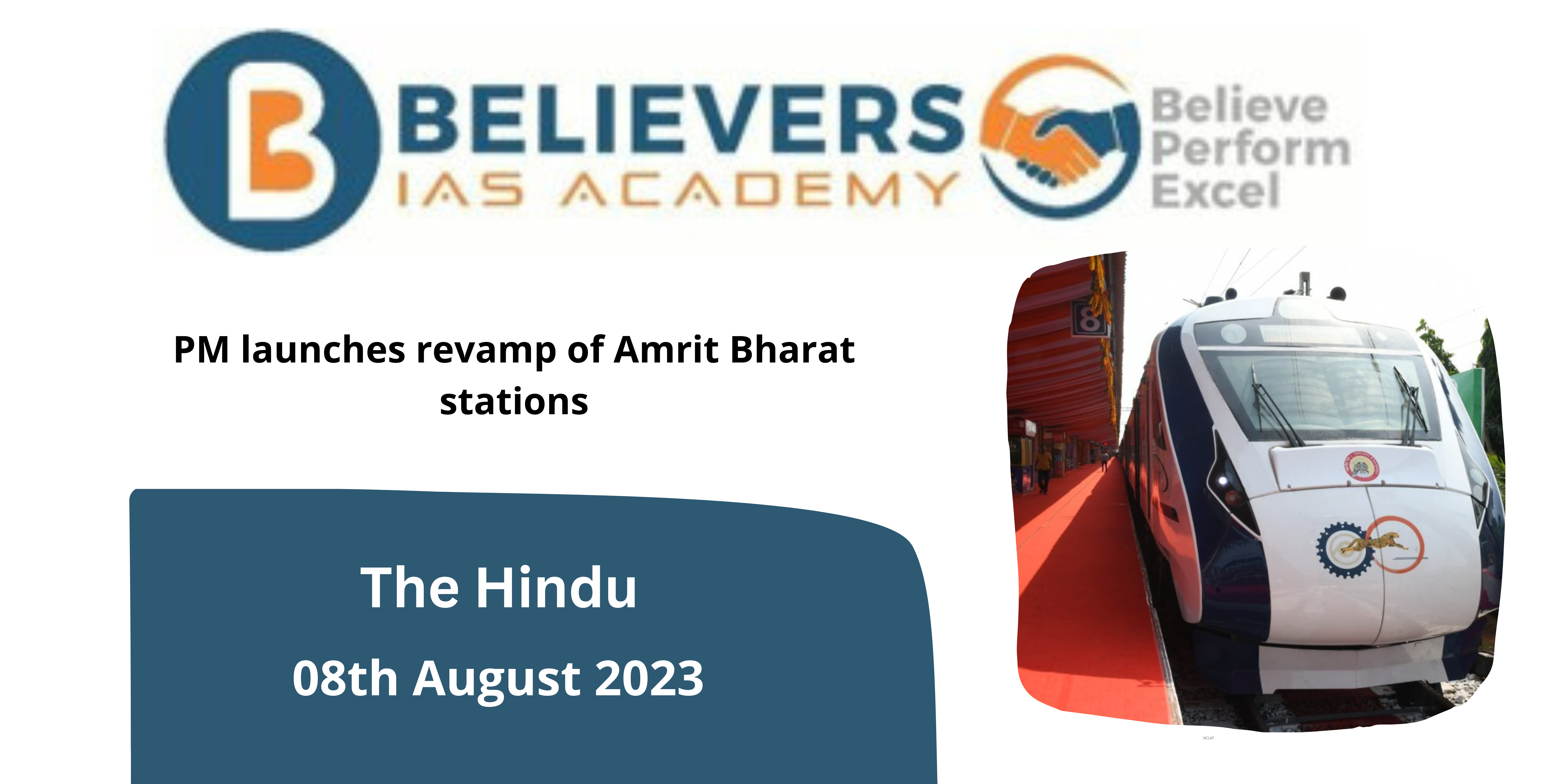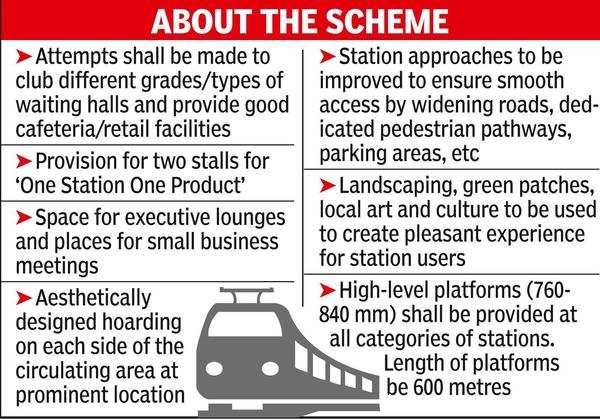PM launches revamp of Amrit Bharat stations
Context
The 508 stations are spread across 27 States and Union Territories — 55 each in Uttar Pradesh and Rajasthan (at a cost of ₹4,000 crores), 49 in Bihar, 44 in Maharashtra (₹1,500 crores), 37 in West Bengal, 34 in Madhya Pradesh (₹1,000 crores), 32 in Assam, 25 in Odisha, 22 in Punjab, 21 each in Gujarat and Telangana, 20 in Jharkhand, 18 each in Andhra Pradesh and Tamil Nadu, 15 in Haryana, 13 in Karnataka and others. The Amrit Bharat initiative will renovate these stations.
What is Indian Railways?
The government of India’s Ministry of Railways owns Indian Railways (IR), a statutory organisation that manages the country’s entire train network. With a total route length of 68,043 kilometres (42,280 mi), running track length of 102,831 km (63,896 mi), and track length of 128,305 km (79,725 mi) as of 31 March 2022, it maintains the fourth largest national railway system in the world by size.
What are the challenges faced by the Indian Railways?
- Capacity & Overcrowding: Indian Railways transports a sizable number of passengers each day, which causes congested trains and stations. The power of trains and infrastructure are under a great deal of pressure as a result.
- Infrastructure Improvement: To satisfy the rising demand and enhance safety, the current railway infrastructure must be significantly upgraded and modernized.
- Safety Concerns: Safety concerns are of utmost importance to Indian Railways. Since collisions, derailments, and accidents frequently occur, the railway system requires ongoing modifications to strengthen safety protocols.
- Delay in timings: Trains that are late and frequently arrive late are ongoing problems for Indian Railways. Track maintenance, operational inefficiencies, and unforeseen incidents are just a few of the variables that might result in delays.
- Lack of Investment: The growth and development of Indian Railways depend on adequate funding and investments in infrastructure and technology. The execution of modernisation initiatives may be hampered by insufficient investment.
- Passenger Comfort: Despite improvements made to passenger amenities, several stations and trains still fall short of providing sufficient facilities and comfort, particularly in lower-class compartments.
- Financial viability: Because of its low fare structures and rising operating costs, the Indian Railways sometimes encounters financial difficulties. Offering economical travel options while maintaining profitability is a never-ending problem.
- Encroachments and Property Acquisition: The extension of the railway network may be hampered by illegal encroachments on railroad tracks and challenges in acquiring property for infrastructure expansion.
- High Energy Consumption: The railways are working to implement more energy-efficient procedures because rail transportation uses a lot of energy.
What is Amrit Bharat Station Scheme and How is it going to uplift train services?
The Amrit Bharat Station Scheme intends to modernize railway stations into user-friendly centres while promoting sustainable urban development and bettering rail services throughout India.
- Scope: The scheme’s overall goal is to upgrade and modernize 1275 railway stations for Indian Railways. It is a comprehensive project to enhance the facilities and services offered to passengers at these stations.
- Master Plans: As part of the plan, each station will receive a Master Plan specifying the precise renovations and enhancements that will be made.
- Implementation in Stages: The station renovation is done in stages to allow for ongoing improvement.
- Amenities Improvement: The emphasis is on improving station amenities, such as better station access, circulation spaces, waiting places, restrooms, lifts and escalators, cleanliness, and free Wi-Fi.
- Promotion of Local Products: The program includes programs like “One Station, One Product” to advertise and market local goods at the stations.
- PIS: Better passenger information systems must be implemented to improve contact with travellers.
- Executive Lounges: Offering executive lounges for business meetings as well as other amenities for travellers’ convenience.
- Multimodal Integration: Attempts to provide seamless connectivity by integrating railway stations with other modes of transportation, such as buses, the metro, etc.
The overall goal of the reconstruction effort is to turn India’s railway stations into thriving, well-connected metropolitan centres while simultaneously promoting sustainable practices and improving passenger experiences.





